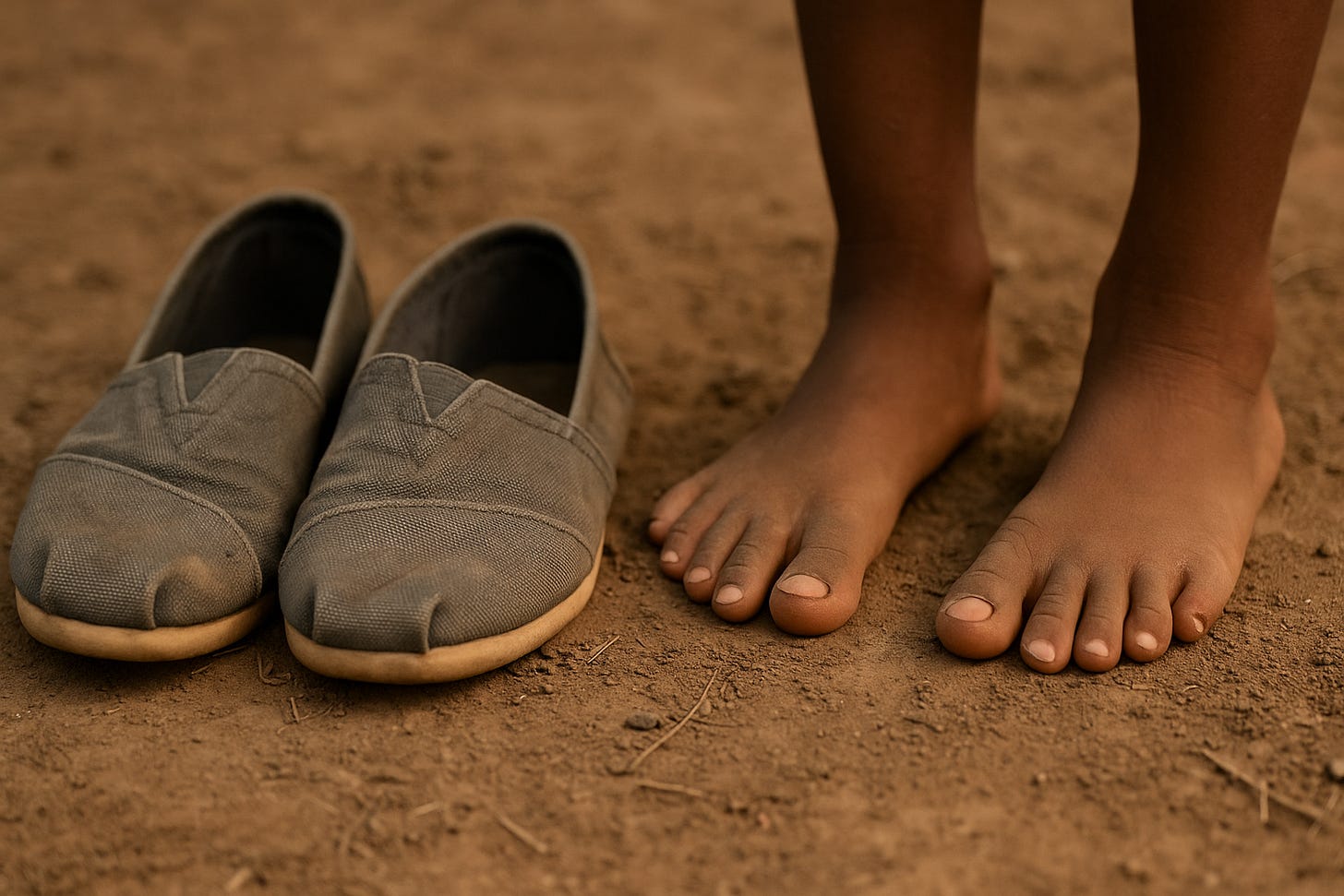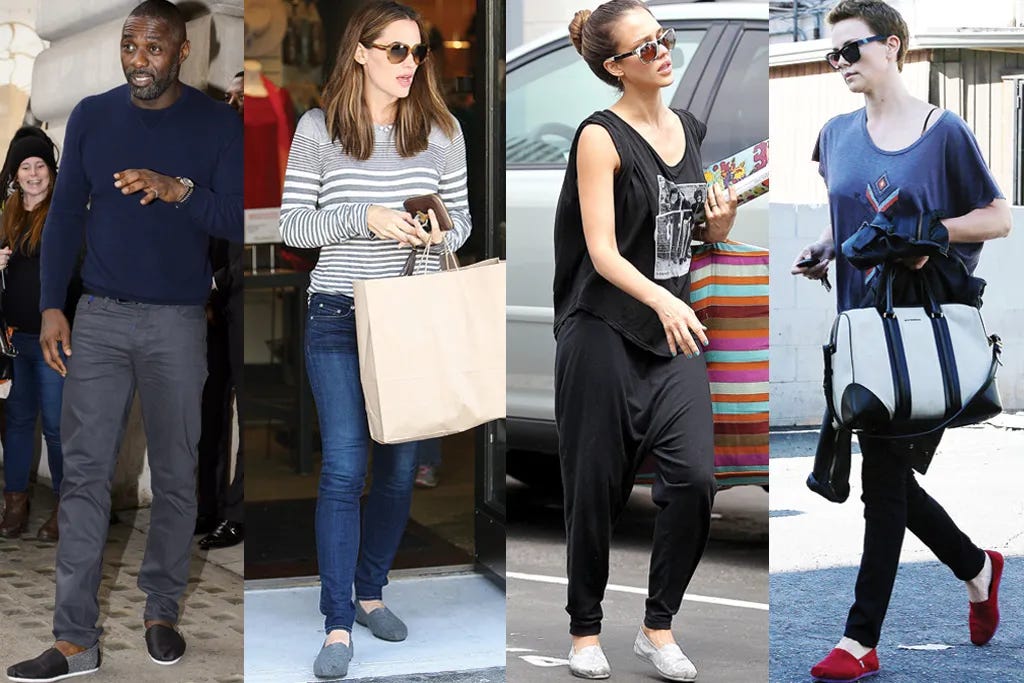Hey everyone, I’m Nithin, and this is the very first post on Curry Capitalist.
I’ve always loved a good story. And I’ve always been drawn to the basic idea of being a capitalist, the whole “money makes money” thing. If you’re wondering what Curry Capitalist is or what I’m trying to do here, this post should give you a pretty good idea.
This has been a long pending thing for me. Something I’ve wanted to start for a while now as a hobby. Not a side hustle, not a grand plan. Not something I’ve got all figured out. Just something I’ve been itching to try.
Also, when I say capitalist, I don’t mean a billionaire in a suit. Even someone investing ₹500 in a mutual fund or running a small side hustle to grow wealth is taking a capitalist step. That’s the kind of everyday capitalism I want to explore here.
So yeah, here we are. I’ll try to keep showing up, learning, and hopefully enjoying the process along the way. 🙂
Let’s start with the first story. It’s about TOMS Shoes, and most of it is inspired by the book Start Something That Matters by Blake Mycoskie, the founder.
The Story of TOMS
Blake Mycoskie took a vacation to Argentina in 2006. He wasn’t looking to start a business. He just wanted to relax, explore a new country, and enjoy some time off. But something he saw there changed everything.
While traveling through small towns, he noticed something hard to ignore. Many kids were walking around barefoot. Not because they wanted to, but because they didn’t own shoes at all.
No shoes meant poor hygiene, cuts, infections, and a higher risk of disease. Even worse, many schools didn’t allow barefoot children. So, kids were being kept out of classrooms. Not because they didn’t want to learn, but because they didn’t have shoes.
That image stayed with him. And that’s where the idea began to form.
One for One Business Model
He didn’t want to just donate money or start a charity.
He thought, what if this could be a business? One where, for every pair of shoes sold, another pair would be given to a child in need. Buy one. Give one.
That idea became TOMS.
The name came from the word tomorrow. The idea was that every pair you buy helps give someone a better tomorrow.
The Starting Days
Blake didn’t know anything about the shoe business. But he found local shoemakers in Argentina and worked with them to make a version of the canvas shoes people wore there.
They made 250 pairs. He packed them into duffel bags and flew back to Los Angeles. He showed them to friends, visited a few local stores, and shared the story.
People didn’t just like the shoes. They loved the idea behind it.
Then came a big moment. A newspaper wrote about TOMS. The website received thousands of orders in one night. The story spread. People talked. It reached more shops and more people.
From Sales to Giving
After selling 10,000 pairs, he and his team went back to Argentina. This time not to relax, but to give. They went from village to village. They put the shoes on the kids themselves. Some of those kids had never worn shoes before.
Here’s a video from their YouTube channel that gives a glimpse into what their giving journeys looked like.
TOMS Grew Fast
TOMS took off. More people started talking about TOMS. Students took part in campaigns. Celebrities wore the shoes.
The company grew fast. The model expanded, not just shoes, but eyeglasses, clean water, and more. But the promise remained the same. Buy something, and someone else gets helped.
By 2012, TOMS had given away over two million pairs of shoes. It looked like the perfect business story. But behind the scenes, problems were growing.
What Went Wrong
As the company grew, it became harder to manage. For every pair sold, TOMS had to make and give away another. That costs money. And then, some experts started to ask hard questions. Was giving free shoes helping? Or was it causing new problems?
In many places, the company hurt local businesses. Local shoemakers couldn’t compete with free shoes. Some communities became dependent. Kids waited for donations instead of buying locally.
At the same time, sales started to slow down. The design stayed the same. People moved on.
In 2014, Blake sold half the company to Bain Capital. They wanted to grow TOMS bigger and faster. But that brought even more pressure. Now, the company had to show profits. Fast.
By 2019, the company was struggling. Sales were down. The debt was high. He stepped away. Lenders took over. And that same year, the company ended the One for One model.
What TOMS Does Today
TOMS still gives back. But not in the same way. Now, instead of giving a product for each sale, the company gives away a part of its profits. They support mental health, equality, and local charities.
It’s not as simple as before, but I feel it’s more thoughtful. The mission is still there, just taking a different shape now.
Here’s a short video from their channel that talks about this shift:
Why does this story matter?
It’s not about a company turning into a billion-dollar empire. It’s not about apps or unicorns.
It’s about someone who saw a real problem and tried to help. He turned a simple idea into a business. It worked for a while. Then things changed. Mistakes happened. The model wasn’t perfect.
But he tried. And that’s what stays with me.
And in the middle of it all, TOMS gave millions of kids their first pair of shoes. That’s something.
For me, this story shows what capitalism can look like when it tries to care. It’s not perfect. But it matters.
That’s it for the first post. Thanks to Priyanka for giving me this book after one of our long conversations. It ended up becoming the first story in Capitalist Tales, a section here on Curry Capitalist.
Lastly, I might not have gotten everything right, but if you're reading this and feel like sharing your thoughts or suggestions, I’d really appreciate it. 🤗
And if you liked it, feel free to share it with someone who might enjoy it too. 🙂







